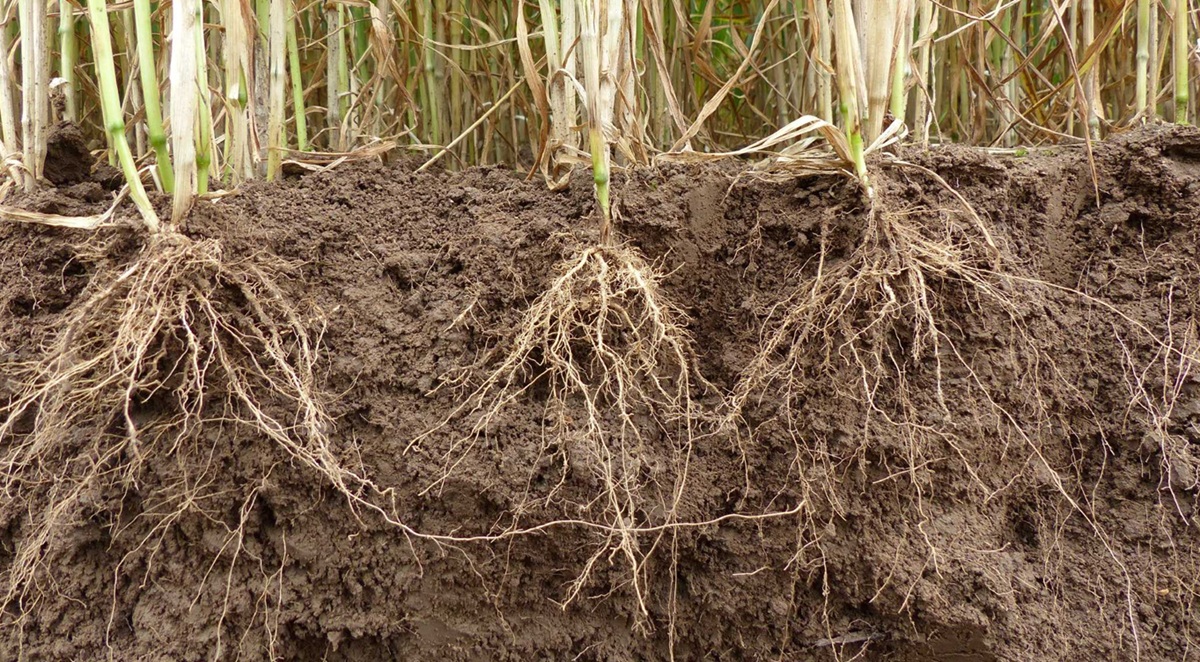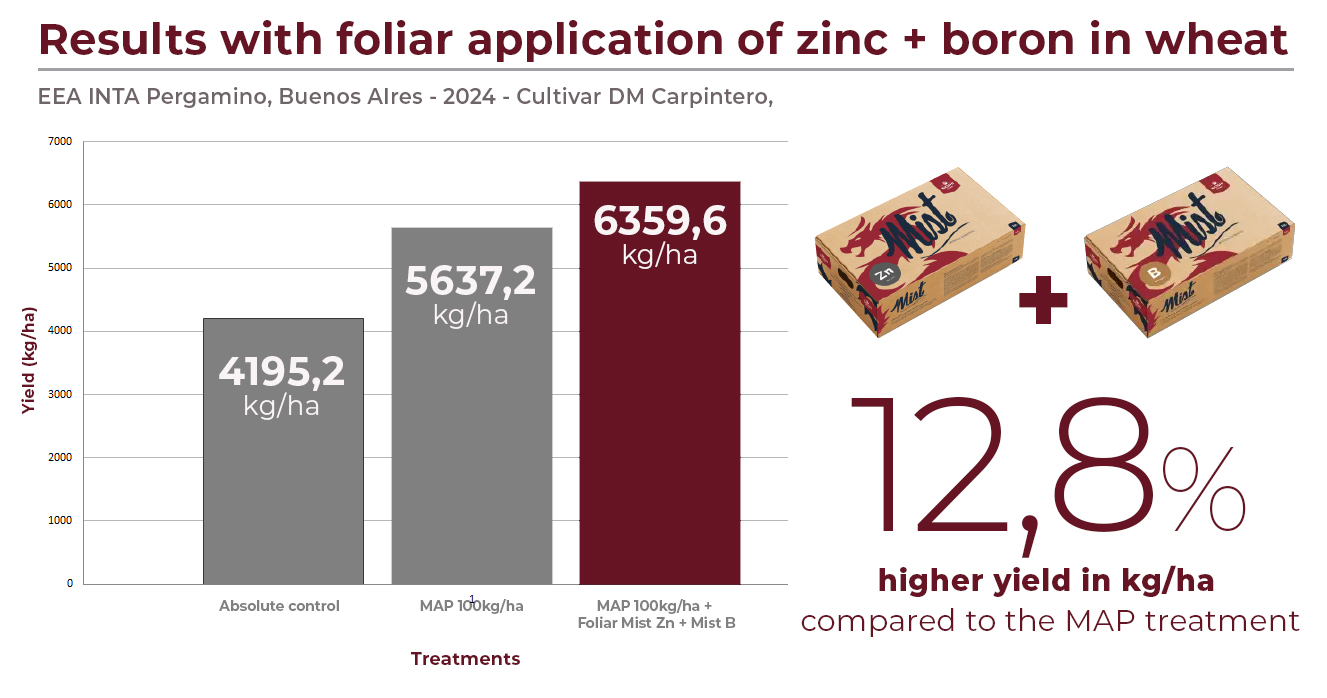Precision nutrition: the strategic role of zinc and boron in wheat production

Zinc and boron are key for wheat to reach its maximum yield and quality potential. These micronutrients are involved in essential processes such as spikelet formation, grain setting, and final grain filling. Their strategic application—especially through foliar sprays at critical growth stages—can significantly improve both yield and quality.
While wheat production has traditionally focused on macronutrients such as nitrogen (N), phosphorus (P), and sulfur (S), soil and plant tissue analyses have shown that micronutrients—particularly zinc (Zn) and boron (B)—play a decisive role in achieving both high yields and the quality standards demanded by the market.
Zinc and boron are essential for wheat growth, reproduction, and tolerance to adverse environmental conditions. Both are involved in key physiological and biochemical functions that directly affect final yield and grain quality—from tiller and leaf formation to pollen viability, grain filling, and protein accumulation.
Zinc in wheat
Adequate zinc supply promotes deep and branched root development, enhancing soil exploration and the efficiency of water and nutrient uptake. In addition, it contributes to reproductive stability by ensuring proper pollination and seed set. Its presence throughout the crop cycle also supports tolerance to low temperatures and improves resistance to root pathogens.


MIST-Zn® is a high-quality foliar fertilizer, formulated as a dispersion of mineral nanoparticles with an adequate concentration of zinc, calcium, silicon, sulfur, and magnesium. Its application is recommended during the early growth stages of the crop and at the beginning of tillering.
Boron in wheat
Boron is involved in cell wall formation and stability, lignin synthesis, and sugar transport within the plant—processes that directly impact grain filling and the final harvest weight. Therefore, its availability is particularly critical during the period from floral initiation to the end of grain filling. A constant supply of this micronutrient helps secure an optimal number of fertile spikelets and good grain size, contributing to both yield and quality.

MIST-B® is a mineral nanoparticle dispersion with an adequate concentration of boron (2%), calcium (3.2%), magnesium (0.4%), and iron (0.4%). As a liquid fertilizer, it can be applied via spraying without inducing plant stress or causing phytotoxic damage. Being a high-purity source, it requires lower doses compared to other alternatives, thus optimizing logistics. The innovative aspect of this technology is that the contribution of nanominerals of different types impacts not only yield but also crop health.
Integration of zinc and boron management into the fertilization strategy
While base fertilization ensures soil availability, foliar applications of these micronutrients have become an effective tool to complement and correct deficiencies. Foliar feeding guarantees rapid absorption and immediate availability at critical crop stages.
Zinc and boron, like other nutrients, are most effective when applied during periods of highest physiological demand. Zinc is particularly important in the early stages of wheat (emergence, tillering, stem elongation), whereas boron becomes more relevant from stem elongation through anthesis and grain filling.
Furthermore, when nitrogen foliars are applied during reproductive stages to increase protein content, zinc and boron can be integrated into the same intervention, optimizing operations and enhancing quality effects.
The combined action of both micronutrients improves crop tolerance to frost, heat stress, or drought during grain filling, and contributes to a more balanced nutritional status, resulting in greater crop health and final yield.
Field results
In 2024, a field trial was carried out under the direction of Agronomist (MSc) Gustavo Néstor Ferraris at INTA Pergamino Experimental Station, on a Pergamino Series soil, Class I-2, Typic Argiudoll. The trial evaluated the response of the long-cycle wheat cultivar DM Carpintero to different comprehensive fertilization strategies.

The results achieved good yields despite water limitations, confirming that fertilization was an effective tool to increase wheat productivity. It was observed that the combination of zinc and boron improved yields compared to traditional fertilization with MAP. The treatment that included the application of 500 ml/ha of MIST Zn® + 500 ml/ha of MIST B® along with 100 kg/ha of MAP showed a statistically significant difference compared to conventional fertilization with only 100 kg/ha of MAP.